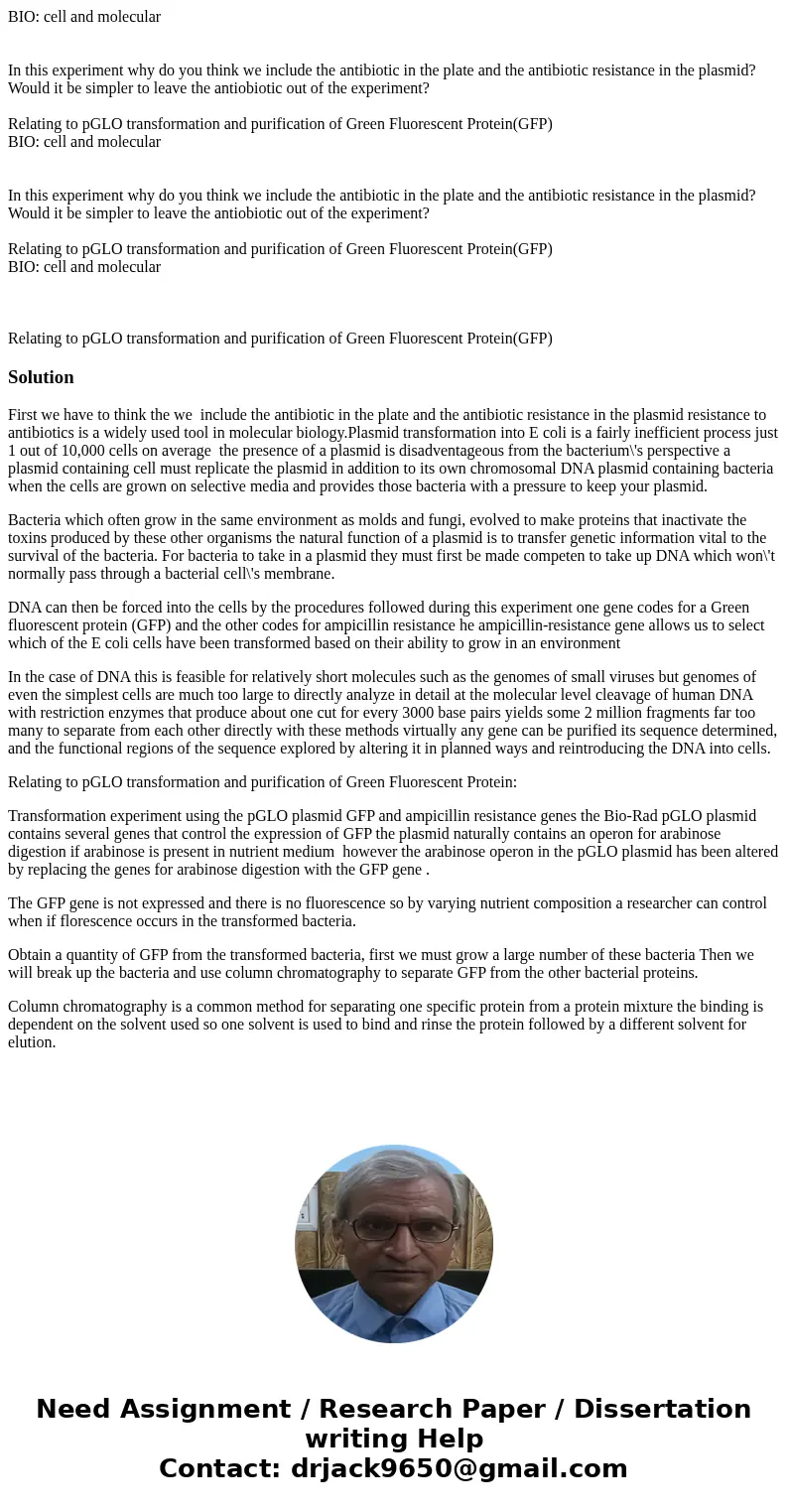BIO cell and molecular In this experiment why do you think w
Solution
First we have to think the we include the antibiotic in the plate and the antibiotic resistance in the plasmid resistance to antibiotics is a widely used tool in molecular biology.Plasmid transformation into E coli is a fairly inefficient process just 1 out of 10,000 cells on average the presence of a plasmid is disadventageous from the bacterium\'s perspective a plasmid containing cell must replicate the plasmid in addition to its own chromosomal DNA plasmid containing bacteria when the cells are grown on selective media and provides those bacteria with a pressure to keep your plasmid.
Bacteria which often grow in the same environment as molds and fungi, evolved to make proteins that inactivate the toxins produced by these other organisms the natural function of a plasmid is to transfer genetic information vital to the survival of the bacteria. For bacteria to take in a plasmid they must first be made competen to take up DNA which won\'t normally pass through a bacterial cell\'s membrane.
DNA can then be forced into the cells by the procedures followed during this experiment one gene codes for a Green fluorescent protein (GFP) and the other codes for ampicillin resistance he ampicillin-resistance gene allows us to select which of the E coli cells have been transformed based on their ability to grow in an environment
In the case of DNA this is feasible for relatively short molecules such as the genomes of small viruses but genomes of even the simplest cells are much too large to directly analyze in detail at the molecular level cleavage of human DNA with restriction enzymes that produce about one cut for every 3000 base pairs yields some 2 million fragments far too many to separate from each other directly with these methods virtually any gene can be purified its sequence determined, and the functional regions of the sequence explored by altering it in planned ways and reintroducing the DNA into cells.
Relating to pGLO transformation and purification of Green Fluorescent Protein:
Transformation experiment using the pGLO plasmid GFP and ampicillin resistance genes the Bio-Rad pGLO plasmid contains several genes that control the expression of GFP the plasmid naturally contains an operon for arabinose digestion if arabinose is present in nutrient medium however the arabinose operon in the pGLO plasmid has been altered by replacing the genes for arabinose digestion with the GFP gene .
The GFP gene is not expressed and there is no fluorescence so by varying nutrient composition a researcher can control when if florescence occurs in the transformed bacteria.
Obtain a quantity of GFP from the transformed bacteria, first we must grow a large number of these bacteria Then we will break up the bacteria and use column chromatography to separate GFP from the other bacterial proteins.
Column chromatography is a common method for separating one specific protein from a protein mixture the binding is dependent on the solvent used so one solvent is used to bind and rinse the protein followed by a different solvent for elution.

 Homework Sourse
Homework Sourse